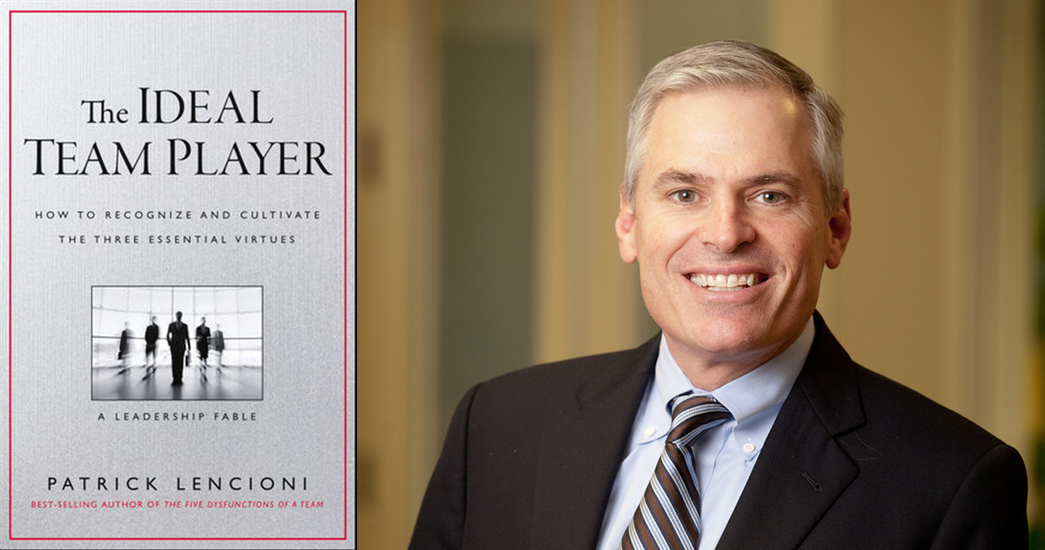How to Hire An Ideal Team Player
Posted by Michelle Drucker on Apr 25, 2016
Patrick Lencioni explains how to hire and retain team players in his new book "The Ideal Team Player."
Patrick Lencioni's business classic The Five Dysfunctions of a Team revolutionized the way we look at teams. In his newest leadership book The Ideal Team Player, Lencioni takes teamwork a step further by introducing the three most important virtues of an ideal team player: humility, hunger, and people smarts.
Humble team members do not have big egos or concerns about status. Hungry individuals are self-motivated and diligent, always going above and beyond without being asked to. Those with people smarts are interpersonally appropriate and aware of other people's feelings and emotions.
These three characteristics are most powerful when combined. Therefore, when you're interviewing a potential candidate, the trick is to ask questions that will indicate humility, hunger and people smarts.
Here are 9 tips to help you identify an ideal team player during an interview:

1. Don't be generic.
If you ask a generic question, you'll most likely receive a generic answer, which will lead you no closer to determining if the candidate is humble, is hungry, and has people smarts. Be specific and intentional with your questions.
2. Debrief each interview as a team.
The first interviewer should meet and debrief with the hiring committee before the next interview in order to clarify which qualities have been identified and which are still unclear.
3. Consider group interviews.
See how the candidate deals with multiple people at once by conducting a group interview. It also allows for more effective debriefing since the interviewers can recall answers together.
4. Make interviews non-traditional.
If you want to observe your candidate's skills and behaviors in a regular setting, try mixing up the traditional conference room, sit-down interview. Instead, take your candidate on a walk, run an errand, or visit a public space.
5. Ask questions more than once.
If a candidate does not provide a sincere or precise answer to a question, don't be afraid to ask it again in a different way. Asking a question more than once will possibly get a different response or reaffirm the genuineness of their first response.
6. Ask what others would say.
Rather than asking a candidate to describe themselves, ask them how others would describe them. This introspective approach typically results in more honest answers and encourages them to think in with a unique, new mindset.
7. Ask candidates to do some real work.
The purpose of this activity is not to profit off your interviewee. Instead, the intention is to see how the candidate performs in the real-world and whether or not their skills measure up to their resume.
8. Don't ignore hunches.
If you have doubts about a candidate, continue to investigate until you can confidently come to the conclusion that the person is humble, hungry, and people smart. Don't settle for uncertainty.
9. Scare people with sincerity.
Be upfront and tell people the exact qualities you're looking for in an ideal candidate. This will potentially hinder those who don't see themselves as a fit and reassure those who do.
Want to learn more about hiring an ideal team player?
In his classic fable-telling narrative style, Lencioni shares the story of Jeff Shanley, a leader who is trying to save his uncle's company by restoring its cultural commitment to teamwork. Beyond the story, Lencioni lays out a practical framework and actionable tools for identifying, hiring, and developing ideal team players.
Whether you're a business leader trying to create a culture of teamwork at your company, a staffing professional hoping to hire real team players, or a team player wanting to develop yourself, this book is as compelling as it is useful! Buy The Ideal Team Player in bulk for your business by clicking the banner below:
This post was written by Michelle Drucker, the manager of marketing at BookPal. She is currently reading Sprint by Jake Knapp and The Art of Strategic Leadership by Steven Stowell and Stephanie Mead.



